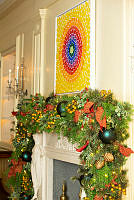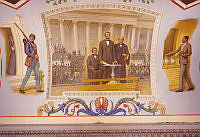
The Decatur House Slave Quarters
In 1821-1822, Susan Decatur requested the construction of a service wing. The first floor featured a large kitchen, dining room, and laundry; while the second floor contained four rooms designated as living quarters. By 1827, the service wing was being used as an urban slave quarters. Henry Clay brought enslaved individuals to Decatur House, starting a trend that was solidified by
















